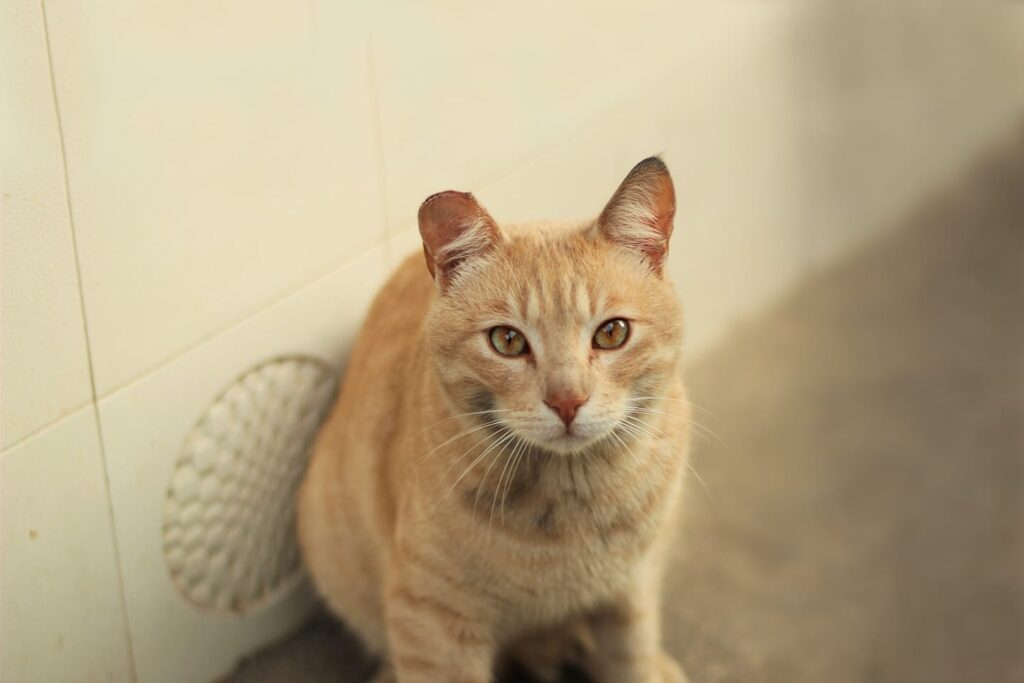6 Steps to Trap-Neuter-Return Success

Trap-Neuter-Release, Trap-Neuter-Return or TNR is the method of humanely trapping feral and free-roaming stray cats. Then the felines are spayed or neutered and returned back where they were found. This prevents the cats from having kittens in the future, which in turn keeps the stray cat population under control.
Contrary to popular belief, you don’t need to be a professional “rescuer” to Trap-Neuter-Return a cat. In fact, many animal care organizations have humane TNR traps that you can rent for just a day or two, for a low fee or even for free. If your neighborhood or street in particular has a lot of free-roaming stray cats, and you have a desire to improve their quality of life, you may be the perfect person to trap, spay or neuter and return these cats.
However, many people don’t know what to do when they come across a feral cat. Erin, a team member here at Found Animals, successfully trapped a free-roaming mama cat and her kittens. Here are the steps she followed. Hopefully, you will find them helpful if you are thinking of doing your own Trap-Neuter-Release!
- Earn the cat’s trust
You will want to start a relationship with the feral cat(s) in your neighborhood before you Trap-Neuter-Return. Might sound strange, but your chances of successfully trapping the cat will directly correlate to how well they trust you. Start by feeding the kitty at the same time each day. Place the food somewhere safe and out of sight. Once they know your feeding routine, introduce the trap by leaving it UNSET in sight of the food. This will allow them to get familiar with the sight and smell of the trap before you bait it.
- Prepare the bait
After several days of allowing the cat to get familiar with the unset trap, pick the day when you want to start Trap-Neuter-Return. Don’t forget to check with your local vet or clinic beforehand to make sure you can take the cat in for surgery the following day. Do NOT feed the cat the evening before you plan to trap them, as cats should not eat 24 hours prior to surgery. The next day, place newspaper on the bottom of the TNR trap and soak it with a bit of juice from a smelly food (like canned mackerel, tuna or salmon) near the front door. Then spoon a small amount of food directly onto the newspaper at the back of the trap, making sure the cat has to step into the trap fully in order to reach it. Never leave the actual can inside the trap, as it may injure your feral friend.
- Set the trap
Open the door and hook it to the open position. This will raise the trigger plate in the trap. When the cat steps on this plate, the hook will release and the door will shut. You can also place a towel over the trap so the trapped cat will feel less exposed. The best place to lay a trap is against something like a fence, shed, or under a hedge – out of sight from the public eye. Make sure it is on stable ground; a cat won’t walk into a trap that shakes or rocks in the wind.
- Wait for action
Once the trap is set, never leave it unattended. You do not want a passerby releasing your cat or the cat being in danger of injury. Keep an eye on the trap from a distance, and check inside the TNR trap every 15-30 minutes. Once the cat is trapped, they will become very scared and vulnerable. Be sure to check for an ear-tip (a straight or v-shaped tip missing from one ear) to confirm the cat has not already been spayed or neutered previously. Place the trapped cat somewhere safe and warm and keep the trap covered to reduce stress on the cat. Never open a trap once there is a cat inside, and don’t try to touch or pet them. Remember, no matter how cute you think they are, free-roaming cats are wild animals!
- Take the cat to a vet or clinic
Prepare your vehicle for Trap-Neuter-Release by laying down some absorbent newspaper or blankets on the seat or floor. To transport the cat, place the cage on top of the newspaper or blanket and secure it down with rope or restraints. Keep the trap covered in the vehicle the entire trip. The unfamiliar vehicle ride will be easier on the cat if their trap is dark and confined.
- The recovery period
After the surgery portion of Trap-Neuter-Return, put the cat in a regular carrier or back in the humane trap lined with a towel or blanket. Allow them to rest for 24 hours before releasing them where they were trapped, or another familiar location. This will help them readjust to their surroundings. Feel free to return to your normal feeding schedule afterwards, as the feral cat may be dependent on you for food.
*Often times cats living in the wild can be friendly and comfortable around people. They may have been house pets before becoming homeless. This was the case with the four cats Erin trapped. Instead of returning these cats to the wild where they were found, we chose to adopt them into homes.
Other things to remember:
- If your neighbors have domestic cats that roam outdoors, let them know you plan to Trap-Neuter-Return so they keep their pets indoors. This will prevent accidental trapping of domestic cats.
- Also, remind your neighbors not to feed the feral cats 24 hours in advance to ensure they are hungry enough to venture into your trap.


